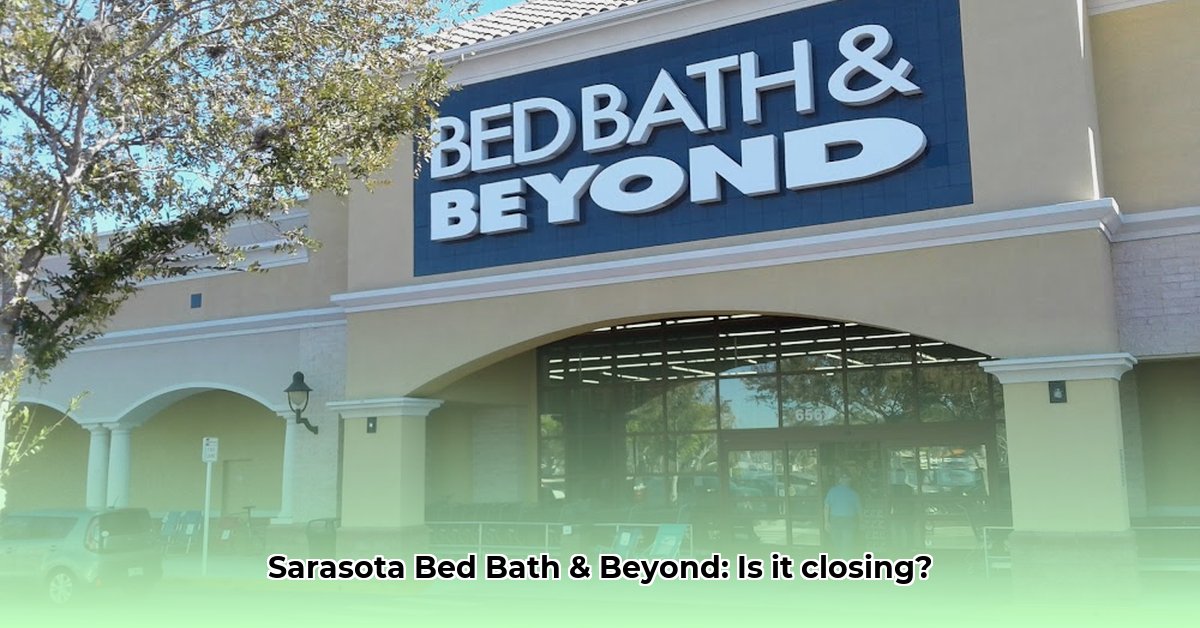
The Sarasota Store: A Post-Bankruptcy Assessment
Bed Bath & Beyond's bankruptcy filing in April 2023 cast a shadow over its Sarasota location. While the company emerged from Chapter 11 in September 2023, the Sarasota store's future remains uncertain. The lack of publicly available sales data for individual stores hinders a precise assessment of its current performance. However, we can analyze broader trends and contextual factors to gain a clearer understanding of its prospects. The Sarasota store's continued operation, maintaining regular hours (9 AM to 8 PM), suggests an ongoing effort to serve customers. But this alone doesn't reveal its financial health. How is the store actually performing?
The Data Deficit: A Major Obstacle
A significant challenge in evaluating the Sarasota store's viability is the absence of key performance indicators (KPIs). Sales figures, customer traffic data, and profitability metrics are not publicly accessible. This lack of transparency makes definitive predictions about its long-term prospects difficult. Without this crucial information, any analysis must acknowledge significant uncertainty.
National Strategies and Local Impact
Bed Bath & Beyond's national strategies, including same-day delivery and curbside pickup, aim to enhance customer convenience and loyalty. The company's rewards program also seeks to retain repeat business. However, the effectiveness of these initiatives in offsetting the negative impact of the bankruptcy on the Sarasota location remains unclear. The bankruptcy filing fundamentally altered the competitive landscape, introducing significant uncertainty about the future.
Assessing the Sarasota Store's Viability
Determining the Sarasota Bed Bath & Beyond's post-bankruptcy performance requires a multifaceted approach. While precise sales figures remain unavailable, we can examine relevant factors to assess its viability. The closure of numerous other Bed Bath & Beyond locations underlines the challenges faced by the reorganized company. The Sarasota store's location within the Sarasota Pavilion mall might offer a relative advantage compared to less strategically situated stores, but this does not guarantee success.
Post-Bankruptcy Challenges: A Competitive Landscape
Several significant challenges confront the Sarasota store:
- Intense Competition: The Sarasota area boasts numerous competitors in the home goods sector, including established retailers like Target and Walmart, as well as smaller, specialized boutiques. The Sarasota Bed Bath & Beyond must differentiate itself to attract and retain customers.
- Inventory Management: The bankruptcy involved substantial asset sales, potentially impacting inventory levels and the ability to replenish stock promptly. A limited product selection would undoubtedly hinder sales.
- Pricing Strategies: Maintaining competitive pricing is crucial in this market. Price sensitivity among consumers requires a carefully calibrated pricing strategy.
- Brand Reputation: The bankruptcy process undoubtedly impacted Bed Bath & Beyond's brand reputation. Rebuilding customer trust is a critical task.
Potential Paths Forward: Strategic Adaptations
Despite the uncertain outlook, certain strategic avenues might enhance the Sarasota store's chances of survival:
- Prioritizing Customer Service: Exemplary customer service can foster loyalty and positive word-of-mouth marketing.
- Targeted Marketing: Tailoring promotions to the specific preferences of the Sarasota customer base is crucial.
- Streamlining Online Integration: Enhancing the online ordering and in-store pickup experience can attract a wider customer base.
- Niche Market Focus: Concentrating on a specific product niche, such as high-end home goods, could differentiate the store from competitors.
Key Takeaways and Future Outlook
The Sarasota Bed Bath & Beyond's post-bankruptcy performance is difficult to definitively assess due to a lack of readily available, granular data. The store faces significant competitive pressures. Its long-term survival depends on its ability to adapt quickly and effectively to the changing retail landscape by focusing on a superior customer experience and competitive pricing. Continued monitoring of its operations and broader industry trends will be vital in tracking its progress going forward. More data is required for a conclusive analysis.